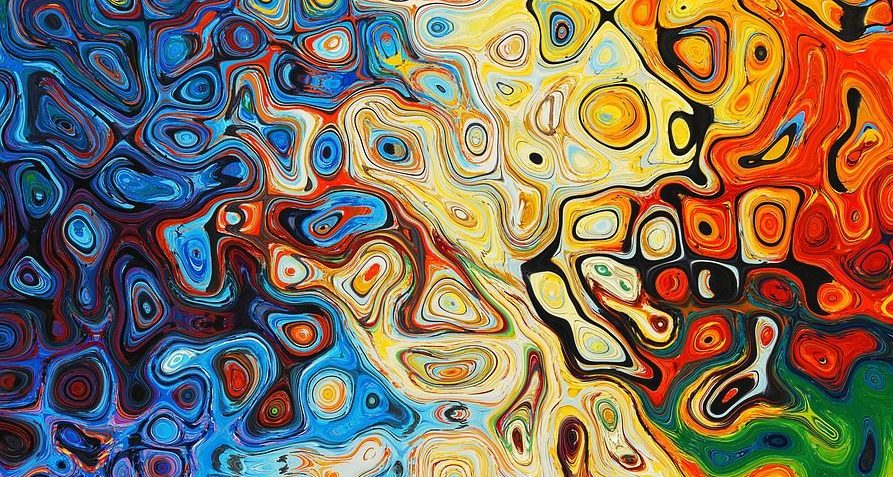Music
People don’t just have feelings towards different genres of music, the music itself portrays and conveys emotions to the listener. Certain pieces of music evoke feelings of happiness, fear, sadness, anger and love as some examples. This idea was explored in this music input. We listened to pieces of music from different genres and wrote down adjectives to describe how they made us feel. We also discussed musical appreciation where links between music, art and literacy are made. For this we listened to Shostakovitch’s Piano Concerto No.2 and created a story based on what that the music invoked in us. This was achieved by using the differentiation in the music to inspire us, for example: tempo changes, key changes, dynamics and the type of instrument used (percussion, woodwind, brass and strings).
The skills developed throughout this input are as follows:
- Listening
- Imagination
- Collaboration
Next steps from this input could be to broaden my musical scope, so I have a varied knowledge of musical genres and the pieces within them. This could be done by taking the time to listen to different types of music and even taking notes on which pieces would be best suited for use in a classroom.
Visual Art
A lot of people have the belief that they cannot draw. I think that this is because there is the misconception that being able to draw means that you are an artist and have the ability to re-create something perfectly. To disprove this misconception, we carried out a short activity where we copied 4 very simple drawings from a piece of flip-chart paper. After the activity we discussed that everyone can in fact draw, but everyone has different strengths and abilities within the scope of ‘drawer’. Each person also reflected on their exposure to the expressive arts from when they were at school, and how this has impacted their idea of teaching the arts.
The skills developed throughout this input are as follows:
- Confidence
- Communication
- Drawing
Next steps from this input would be to continually develop my drawing skills by practising everyday. I can choose simple and straightforward pictures to reproduce and gradually increase the difficulty and amount of detail each time.
The Link
As this was the introduction to the module, the link for me, was one of proving. Proving that everyone can draw and that everyone has the ability to understand and take something from music when they listen to it. As we used our drawing skills in the music input to produce the storyboards, this idea that everyone can draw was reiterated.
Teaching Music
Participating in music can be extremely fun for children and teachers alike, and teaching music can be just as enjoyable. The activities that we carried out would be great to use in a classroom. I think that it would work well throughout the whole school but with early and first level the adjectives used might be simpler than that of second level (e.g Happy and Sad). The fact that the activity is cross curricular would be great for those schools who do not have a focus on the arts. The steps below are those that I would take when teaching this activity:
- The children listen to various genres of age appropriate music and write adjectives to describe how it makes them feel.
- The children listen to a longer piece of music and create a story that resembles what is happening in the piece for them.
- The children use their art skills to create a storyboard of their idea.
- The children use their storyboards to help them write a creative story based on the piece.
- Previous steps are done individually but then, in small groups the children choose one idea that they will recreate. This could be done through dance, drama, or even by incorporating digital technology and creating a film or animation.
Teaching music and exposing children to the wonder of music can be a joy, but there can be some barriers when it comes to teaching music. Time, lack of resources, no confidence if there is no specialist and classroom management can all affect the teaching of music. Finding time to prepare and plan a music lesson can be quite difficult, especially if there are ‘more important’ areas of the curriculum that are focused on in the school. Lack of resources such as instruments can drastically reduce the exposure children get to music education. Learning to play an instrument can be utterly life-changing for some children and missing out on that experience is devastating. Some schools do not have the luxury of a music specialist and thus the teaching of music falls to the teacher. If the teacher has very little or no confidence in teaching music because they ‘can’t do it’ and refuses to teach it, it means the children miss out on all the benefits from music. Classroom management when teaching music is imperative, especially if they are using instruments. Badly behaved children can result in instruments being damaged, so having a good system for management of the children can mean that the children get to fully experience the magic of music. Messing around a little is perfectly fine and part of the experience of music, but taking it too far can result in disaster (instruments being broken or children being removed from the music programme).
Teaching Visual Art
From experience, there are a lot of children out there who don’t think they are good enough to take part in art activities because they can’t draw or aren’t good enough at drawing. Using the activity that we did would be a good way to show children that they can and should draw. A strategy to encourage children to draw would be to give them each a small sketchbook that they can use to develop their drawing skills using the technique I discussed in my next steps. If the class was organised so that there was a soft start at the beginning of the day or a period of mindfulness, the children could carry out short drawings in their sketchbooks then.
There can be a number of factors that act as barriers to teaching the arts in general. Resources, time and space are just a few examples. If resources are limited then teachers are restricted with what they can expose children to, having to resort to simple and more basic activities. Time is another issue that plagues teachers who want to be more experimental with teaching art. More basic activities such as drawing and painting are favoured over more advanced techniques such as print making and sculpting because they take a long time to plan and execute (Cox et al., 2007). Space can affect the teaching of art if there are no out of class spaces where art can be taught, especially if the classroom itself is too small to do those certain activities within.
Issues
As the years go by, schools seem to become more interested in the arts. They have lots of colourful displays all over the school that are neatly displayed and show off the schools talents. Although schools seem to be pushing the integration of arts into their curriculum, a lot of schools have a paradoxical approach to the arts. They care deeply about the aesthetic of their displays and their image of an ‘arty’ school, but they don’t invest in real resources or teacher training so as to develop and enhance their arts programmes (Penny et al., 2002). This means that the children miss out on experiencing the arts and all the benefits they provide.
References
Cox, S., Grahame, J., Herne, S., McAuliffe, D. and Watts, R. (2007) Art and design processes. In: Cox, S. and Watts, R. (eds.) Teaching Art and Design 3-11 Reaching the Standard Series. New York: Continuum International Publishing Group, pp.31-83.
Penny, S., Ford, R., Price, L. and Young, S. (2002) Teaching Arts in Primary Schools. Exeter: Learning Matters Ltd.


